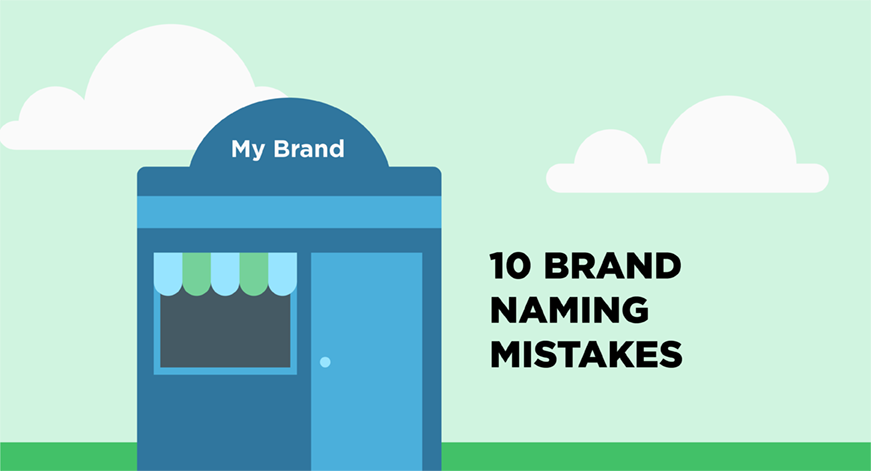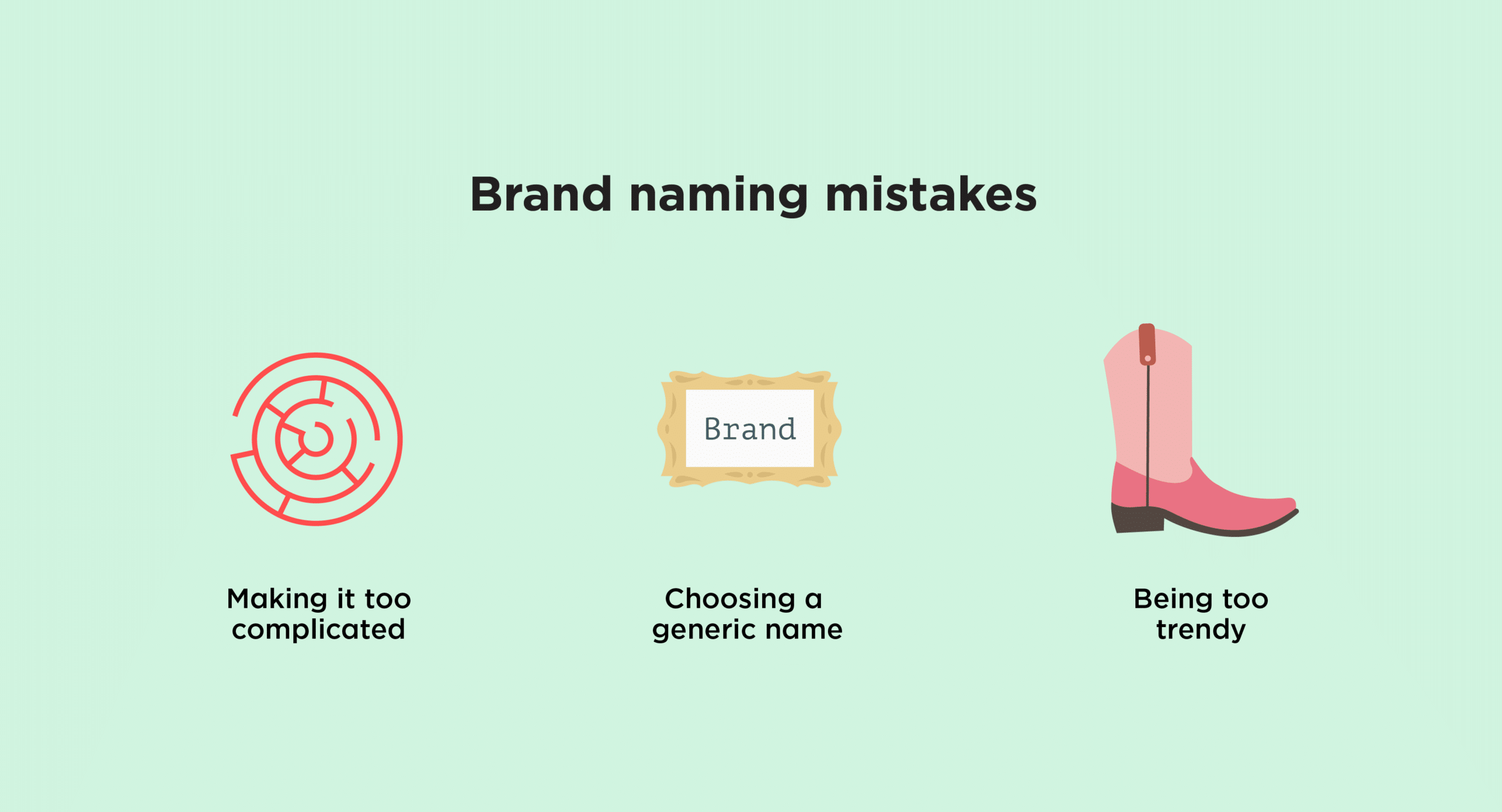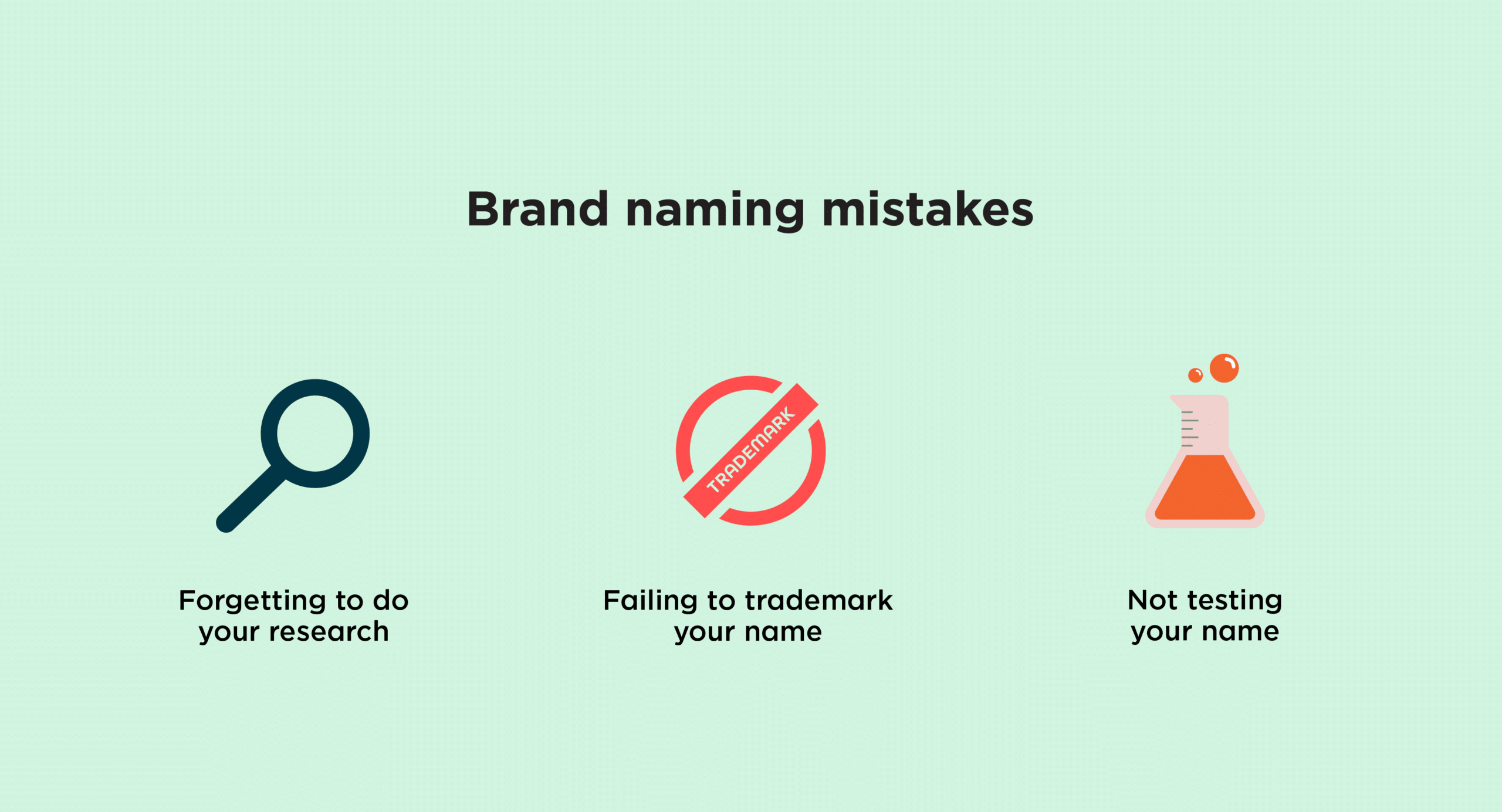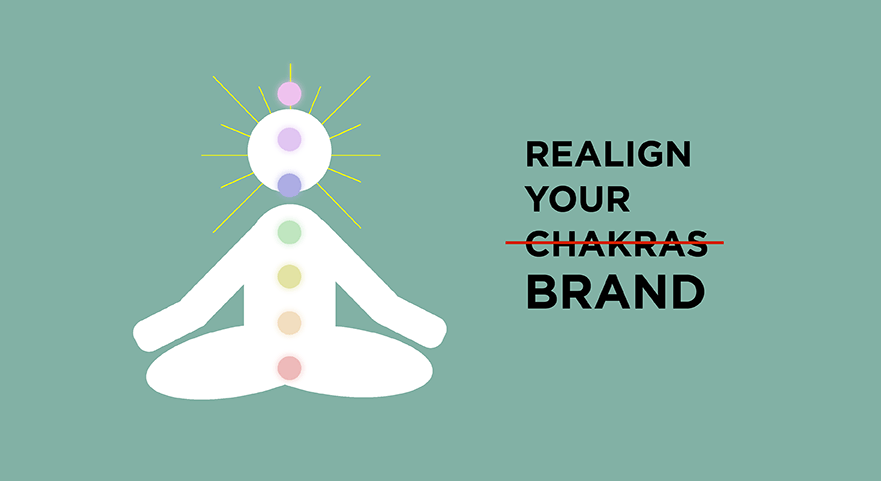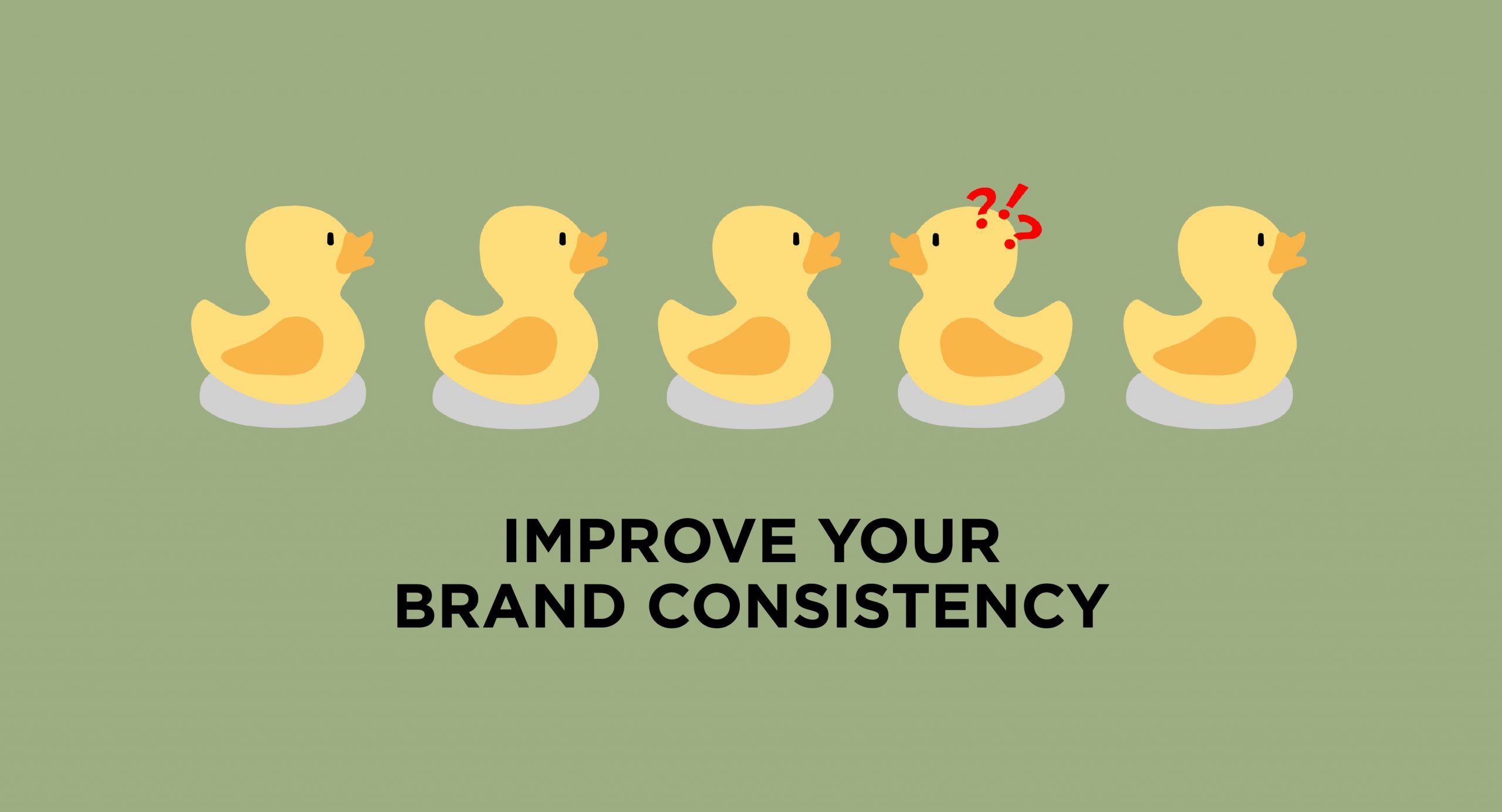BRANDING
How To Avoid The Top 10 Brand Naming Mistakes
Your brand name is one of the most important assets of your business. It’s the first thing that potential customers see and hear. It’s crucial to get it right.
Your brand name is the foundation of your identity, reputation, and recognition. It’s also the basis of your legal protection and differentiation.
But finding your perfect brand name isn’t easy. There are many factors to consider, such as your brand values, company culture, target audience, competitors, industry and SEO. And there are many pitfalls to avoid, such as generic, complicated, overly trendy and hard-to-pronounce names.
In this ultimate guide to naming your brand, we share the top 10 brand naming mistakes that could kill your business and how to avoid them. We’ll also give you some examples of good and bad brand names and tips on creating a memorable and effective brand name for your business.
The top 10 common brand naming mistakes to avoid
- Choosing a generic name
- Making it too complicated
- Being too trendy
- Ignoring cultural connotations
- Forgetting to do your research
- Not considering SEO
- Failing to trademark your name
- Being too narrow
- Not testing your name
- Choosing a name that is hard to pronounce
Mistake 1: Choosing a generic name
What is a generic brand name?
A generic name is a name that describes what your business does or offers in a very general way. For example, “Online Bookstore” or “Car Rental Service”. They may seem clear and straightforward, but they’re also boring and forgettable. They don’t tell your customers anything unique or distinctive about your brand. They also make it harder for you to stand out from your competitors and to rank well on search engines.
How to avoid choosing a generic brand name.
Aim for a name that conveys your brand personality, values, benefits or story. Avoid using common words already used by many other businesses in your industry or category. Instead, look for more specific, original and creative words.
Examples of unique brand names.
Instead of “Online Bookstore”, Booktopia combined the words “book” and “utopia” to suggest a paradise for book lovers. Instead of “Car Rental Service”, Zoomcar implies speed, convenience and fun.
Mistake 2: Making it too complicated
What is a complicated brand name?
A complicated brand name is hard to spell, pronounce, remember or understand like “Xobni” or “Zynga”. They may seem clever or quirky, but they can be confusing and frustrating for your customers. They make it difficult for your customers to find you online, refer you to others or trust you as a credible and professional business.
How to avoid choosing a complicated brand name.
To avoid making your name too complicated, choose a name that is simple, clear and easy to say and write. Avoid using numbers, symbols, hyphens or unnecessary letters in your name. Instead, look for short, familiar, or easy-to-pronounce words.
Examples of uncomplicated brand names.
Instead of “Xobni” (which is “inbox” spelt backwards and was a software company that helped users manage their email contacts), Inboxer is more intuitive and descriptive. “Zynga” is the name of the founder of a social gaming company’s dog, but Playa is more simple, playful and appealing.
Mistake 3: Being too trendy
What is a trendy brand name?
A trendy name is a name that follows a current fad or fashion in naming, like using suffixes like “-ify”, “-ly”, or “-ster” (e.g., Spotify, Bitly, Hipster) or using misspellings or abbreviations (e.g., Flickr, Tumblr, Grindr). While these names may seem cool or catchy for now, they may become outdated or clichéd over time. They could lose their originality and differentiation as more and more businesses adopt similar naming styles.
How to avoid choosing a trendy brand name.
To avoid being too trendy with your name, you should aim for a timeless and classic name. Avoid copying or imitating other popular brand names in your industry or category. Instead, look for words that are meaningful, distinctive and enduring.
Examples of brand names that defy trends.
For example, instead of using “-ify” as a suffix for your music streaming service (e.g., Musicify), you could use a word that relates to music history or culture (e.g., Rhapsody). Instead of using a misspelling or abbreviation for your photo-sharing app (e.g., Picr), you could use a word that evokes emotion or creativity (e.g., Snapjoy).
Mistake 4: Ignoring cultural connotations
What are cultural connotations in brand naming?
A cultural connotation is a meaning or association that a word or phrase has in a specific culture or language. For example, “Nike” is the name of the Greek goddess of victory and “Amazon” is the name of the largest river in the world. These names have positive and powerful connotations that enhance their brand image and appeal. However, not all cultural connotations are positive or appropriate. Some names may have negative, offensive or embarrassing meanings or associations in different cultures or languages. For example, “Nova” is a car brand that means “not going” in Spanish.
How to avoid choosing a culturally inappropriate brand name.
To avoid ignoring cultural connotations with your name, choose a respectful and suitable name for your target markets and audiences. Avoid using words or phrases with unintended or undesirable meanings or associations in different cultures or languages and look for words or phrases that are positive and relevant for your brand.
Examples of culturally appropriate brand names.
Instead of using “Nova” as a car brand in Spain, you could use “Luna”, which means “moon” and suggests elegance and innovation. Extensive research and a diverse creative team can help you get this right.
Mistake 5: Forgetting to do your research
Why is research important in brand naming?
Research is an essential part of the brand naming process. It helps you understand your brand positioning, ideal customers, competition and market. It also allows you to generate and evaluate your potential brand names. Without research, you may choose an irrelevant or inappropriate name for your business.
How to use research when choosing your brand name.
Choose your name based on data and insights rather than personal preference, opinion or assumptions. Look for sources and methods that can help you validate and refine your brand name so that you have checked it’s right for your business.
Examples of research tools for brand naming.
You can use online tools such as Namechk to check the availability of domain names and social media handles for your potential brand names. You can use online tools such as Google Trends to check the popularity and demand of keywords related to your possible brand names, or SurveyMonkey to conduct surveys and polls to get feedback from your target audience on your potential brand names.
Mistake 6: Not considering SEO
What is SEO, and why is it important in brand naming?
SEO stands for search engine optimisation, which is the process of improving the visibility and ranking of your website on search engines such as Google. SEO is important for your brand name because it affects how easily and quickly your customers can find you online. A good brand name can help you boost sales by attracting more visitors to your website.
How to incorporate SEO into brand naming.
Aim for a name that is optimised for search engines. You’ll need to do keyword research to establish what the popular search terms are for your industry. Avoid using phrases that are too common, similar, or obscure for search engines. Instead, look for names that are unique, relevant and keyword rich.
Examples of search engine optimised brand names.
Rather than using “The Flower Shop” as a florist business name, which is a little generic for search engines, you could use “Bloom & Blossom Flowers”, which is unique and descriptive. Once you have established a strong brand, keyword-rich branding becomes less relevant.
Mistake 7: Failing to trademark your name
What is a trademark?
A trademark is a legal protection that grants you the exclusive right to use a name, logo, slogan or design for your business. A trademark helps prevent others from using your name or a similar name for their business. It also allows you to build your brand recognition and reputation.
What happens if you don’t trademark your brand name?
Failing to trademark your name can expose your brand to the risk of infringement, confusion or dilution. Infringement occurs when someone else uses your name or a similar name for their business without your permission. Confusion occurs when customers mistake another business for yours because of their similar name. Dilution occurs when your name loses its distinctiveness or value because other businesses use it.
How to get it right.
Choose a name that is eligible and available for trademark registration. Avoid using names that are already registered or pending registration by other businesses. Instead, look for unique, distinctive names suitable for your business. To register and trademark your name in Australia, check out the Australian Government’s website.
Mistake 8: Being too narrow
What is a narrow brand name?
A narrow name is a name that limits your brand’s scope, potential or growth. Even though they have been highly successful, “Toys R Us” and “The Body Shop” are examples of narrow brand names. They restrict the brand’s ability to offer new products or services, enter new markets or segments, or adapt to changing customer needs and preferences.
How to avoid choosing a narrow brand name.
Aim for a flexible and scalable name. Avoid using words that are too literal, specific or restrictive for your brand. Instead, look for more abstract or suggestive words for your brand.
Examples of broader brand names.
“Toys R Us” could be called “Play”, which is more flexible and inclusive for different toys and customers. “The Body Shop” is quite literal and restrictive compared with “Lush”, which is more abstract and suggestive for different products and experiences.
Mistake 9: Not testing your name
Why you must test your brand name.
Testing your name is an important step in the brand naming process. It helps you to evaluate how your potential customers perceive and respond to your brand name. It also allows you to identify any issues or problems with your brand name before you launch it. You must test your name to avoid choosing a name disliked, misunderstood or ignored by your customers.
How to test your brand name.
To refine your brand name, use testing with your target audience (not your family!). When choosing your brand name, you should avoid relying solely on your opinion or judgment. Instead, look for ways and methods that can help you test your brand name with real customers, like surveys, polls or social media.
Examples of testing tools for brand names.
You can use online tools such as PickFu to run quick and easy polls to get feedback from your target audience on your potential brand names, or you can ask on social media. Getting help from a brand naming agency is also a good idea if your budget allows.
Mistake 10: Choosing A name that is hard to pronounce
Why you should avoid hard-to-pronounce brand names.
Hard-to-pronounce names are difficult for your customers to say or hear. “Miele” and “Huawei” are successful examples, but they can be challenging and frustrating for customers. They make it hard for your customers to communicate with you or others about your brand or remember or recall it.
How to avoid a hard-to-pronounce brand name.
To avoid choosing a name that is hard to pronounce, you should aim for a name that is easy and pleasant to say and hear. You should also avoid using words with unusual spellings, sounds or syllables for your brand. Instead, look for words that have familiar spellings, sounds and syllables for your brand.
Examples of easy-to-pronounce brand names.
For example, instead of using “Miele” as an appliance manufacturer name, which is pronounced as “MEE-luh” in German but often mispronounced as “MY-lee” or “MILL-ee” in English, you could use “Mila”, which is simpler and more consistent in pronunciation across languages. Instead of using “Huawei” as a smartphone maker name, which is pronounced as “HWA-way” in Chinese but often mispronounced as “HOO-a-way” or “HOO-way” in English, you could use “Hua”, which is shorter and more straightforward in pronunciation across languages.
Brand Naming: How to get it right
Choosing a great brand name is not easy, but it’s not impossible either. By avoiding these ten brand naming mistakes, you can create a brand name that is memorable, effective and suitable for your business. A brand name that reflects your brand strategy, resonates with your target audience and stands out from your competitors.
But you don’t have to do it alone. At Liquid Creativity, we’re experts in branding and naming. We can help you to create a brand name that is strategy-led, customer-focused and market-ready. We can help you avoid the common pitfalls and challenges of brand naming and guide you through the process with ease and confidence.
If you’re ready to take your brand to the next level with a great brand name, contact us today. We’d love to hear from you and help you with your brand naming needs.
FAQs
What is a brand naming mistake?
A brand naming mistake is an error or flaw that affects the quality, effectiveness or suitability of your brand name. It can hurt your brand’s image, reputation or recognition. It can also make it harder for your customers to find, remember or trust your brand.
How does using a generic name hurt my brand?
Using a generic name hurts your brand because it makes your brand boring and forgettable. It doesn’t tell your customers anything unique or distinctive about your brand. It also makes it harder for your brand to stand out from competitors and rank well on search engines.
What are some common mistakes when using geographic locations in a brand name?
Some common mistakes when using geographic locations in a brand name are:
- Using a location that is too broad or vague (e.g., “Global Solutions”, “Worldwide Travel”)
- Using a location that is too narrow or specific (e.g., “Swan Street Plumbing”, “Rose Bay Accounting”)
- Using a location that is irrelevant or misleading (e.g., “New York Pizza”, “Paris Fashion”)
These mistakes can limit your brand’s scope, potential, or growth. They can also confuse or alienate your customers who are not from or familiar with the location.
What are some key factors to consider when creating a brand name?
Some key factors to consider when creating a brand name are:
- Your brand strategy defines your goals, values, personality, and positioning. Your brand name should reflect and support your brand strategy.
- Your target audience is the group of people who are most likely to buy or use your products or services. Your brand name should resonate and connect with your target audience.
- Your competitors are the other businesses that offer similar products or services as yours. Your brand name should differentiate and distinguish your brand from your competitors.
- Your industry is the category or sector that your business belongs to. Your brand name should be relevant and suitable for your industry.
- Your culture is the set of beliefs, values, norms, and customs that influence your business. Your brand name should be respectful and appropriate for your culture.
- Your SEO improves the visibility and ranking of your website on search engines. Your brand name should be optimised and keyword-rich for search engines.
